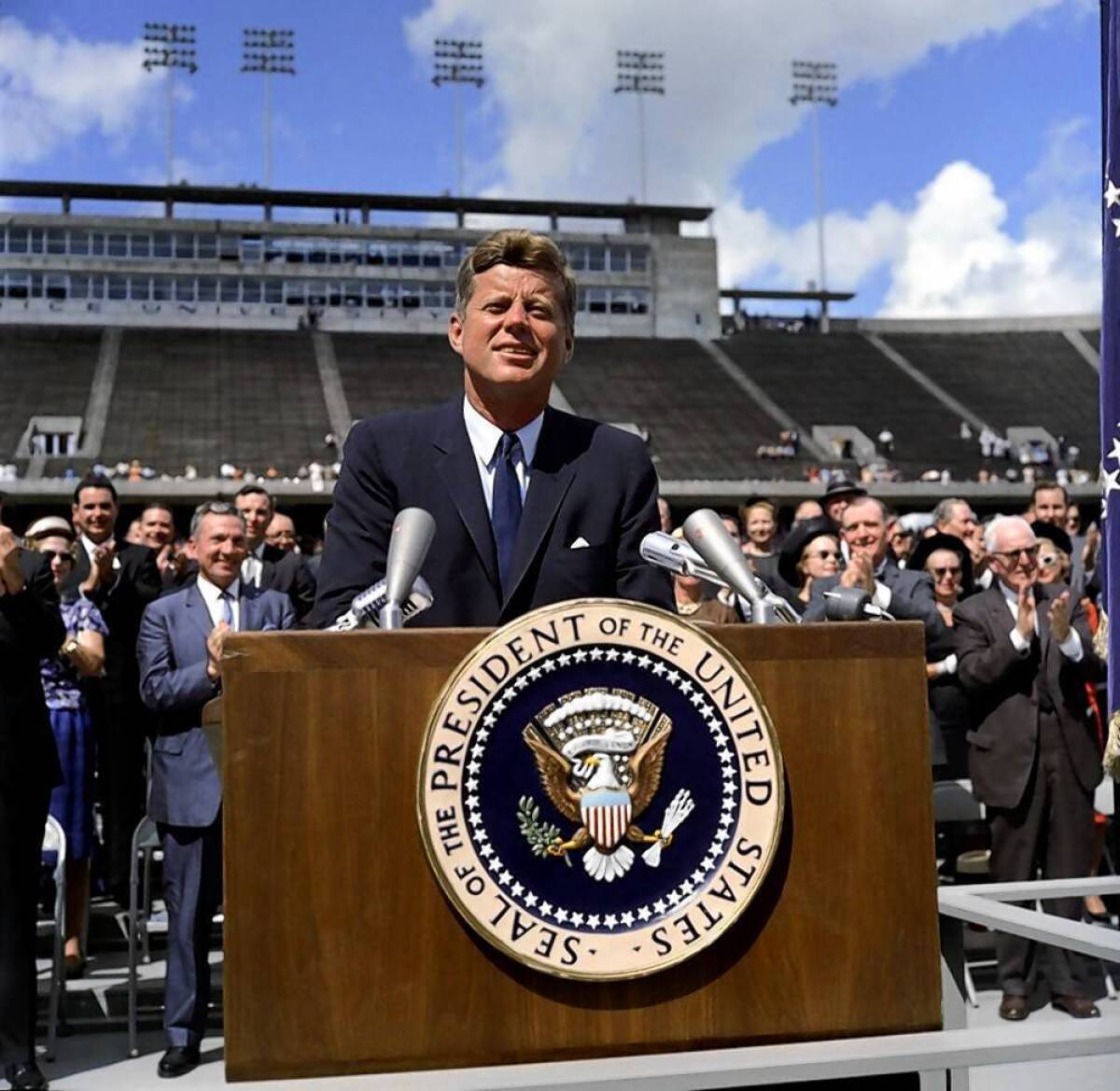What John F. Kennedy was -- and wasnât

Twenty-five years ago, I asked Charles Bartlett, a syndicated columnist, to tell me about his old and close friend, John F. Kennedy. Bartlettâs answer: âNo one ever knew John Kennedy, not all of him.â
Now, 50 years after Kennedyâs assassination, that answer still seems relevant.
Kennedy was a compartmentalized man with much to hide, comfortable with secrets and lies. He organized his White House as a wagon wheel, with himself as what he called âthe vital center,â the hub. All of his relations along the spokes were bilateral. âIt was instinctive at first,â he said. âI had different identities, and this was a useful way of expressing each without compromising the others.â
Debate about those identities, and about what kind of president Kennedy really was, has dominated the discussion in advance of the anniversary of his death. Professors and pundits tend to downgrade Kennedyâs legacy, seeing him as an ordinary, even ineffective leader. But the American people â or at least three-quarters of them, according to polling done this month by the Gallup organization â rate him as the greatest of modern presidents.
Historians and scholars do not rank Kennedy with the top tier of presidents. They often seem peeved that citizens place him alongside Washington, Lincoln and Franklin D. Roosevelt in the top five. And their assessment is starting to influence the history books that students read in school. The New York Times, in a long front-page story by Adam Clymer, recently reported that high school textbooks, unlike those of an earlier era, no longer portray Kennedy as a tragic hero.
âIn general, the picture has evolved from a charismatic young president who inspired youths around the world to a deeply flawed one whose oratory outstripped his accomplishments,â wrote Clymer. âAverting war in the Cuban missile crisis got less attention and respect. Legislative setbacks and a deepening commitment in Vietnam got more. The Kennedy-era glamour seemed more image than reality.â And others have focused recently on how Kennedyâs deeds never matched his soaring rhetoric.
But image counts, and so do words. Kennedy, like Roosevelt and Ronald Reagan, understood that words and images are the way to reach millions of people. The presidentâs job is to lead the nation, not manage the government, which is unmanageable. Nobody remembers whether Lincoln balanced the budget.
Kennedy probably doesnât belong on a list of the top five presidents. But I would put him near the top of the next list. Although he served less than three years, he was the most important man in the world at a critical time, the man in charge at a hinge-point in national and world politics, diplomacy and war â at home and abroad.
At the end of his days, he had his share of historic achievements: He prevented regional wars in Cuba and Germany, and possibly even World War III. He put the government on the side of the minority in the black struggle for civil rights â no small act of political courage when his own party, the Democrats, controlled the segregated Southern states and Congress. He gambled confidently that the United States could overtake the Sovietsâ early lead in space exploration, mobilizing the nation by pledging that an American would walk on the moon before the end of the 1960s. (And we did it!) He negotiated a nuclear test ban treaty with the Soviet Union, the first of the nuclear age. He put national healthcare and immigration reform on the agenda.
Yes, he also had his disasters. He recklessly approved an invasion of Cuba in 1961 at the Bay of Pigs, and he foolishly did the same in signing off on the overthrow of President Ngo Dinh Diem of South Vietnam in 1963, leaving the United States stupidly overcommitted in Southeast Asia and backing military dictators distinguished by their corruption and incompetence.
Kennedy also changed the way we choose our leaders. He ignored and destroyed the structure of party bosses and conventions, winning the Democratic nomination by traveling the country, building his own state organizations and winning over the national political media. In service of his ambition, he employed everything available to him: family money, the new medium of television, even home movies of his photogenic family and lifestyle. He would not wait his turn, cutting to the head of the line in front of Lyndon Johnson, Adlai Stevenson and Hubert Humphrey. He built the model of modern presidential ambition and campaigning, demonstrating that the crucial qualification for the top job was wanting it.
He also inspired and organized a generation ready for something new, the young veterans of World War II. He and, later, his beautiful wife, were the role models for the way younger Americans lived their lives. He did not wear hats, and soon enough no men did. He wore his hair long, and soon we all did. He promoted optimism in the people who elected him.
He was irresistible to millions around the world; the story was classic tragedy, the young prince struck down, an athlete dying young. It became the stuff of its own myths and legends, carefully cultivated by his wife, his family and his followers. And the legends have faded slowly. In that Gallup poll taken this month, the Americans that most admired Kennedy were those in the age group 18 to 29.
So there is every chance they will be showing and telling this story 50 years from now.
Richard Reeves is a senior lecturer at the Annenberg School for Communication and Journalism at USC. He is the author of âPresident Kennedy: Profile of Powerâ and general editor of âThe Kennedy Years: From the Pages of The New York Times.â
More to Read
A cure for the common opinion
Get thought-provoking perspectives with our weekly newsletter.
You may occasionally receive promotional content from the Los Angeles Times.










